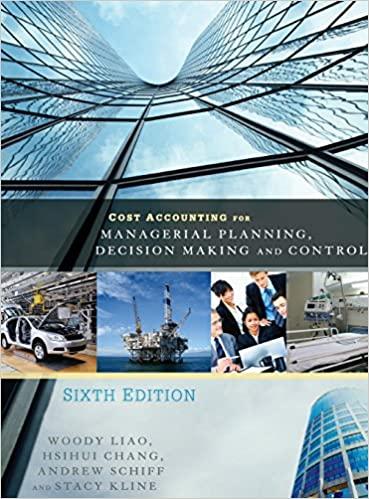Question
1.When a firm sells a trading security, it recognizes: a.the average of the selling price and the book value as a gain or loss in
1.When a firm sells a trading security, it recognizes:
a.the average of the selling price and the book value as a gain or loss in measuring
net income.
b. the difference between the selling price and the book value as a gain or loss in
measuring net income.
C. amortizes any difference between the acquisition cost and maturity value as
interest revenue over the life of the debt.
d. the difference between the selling price and the acquisition cost of the security as a
realized gain or loss on the income statement.
2. Which of the following statements does not apply to preventing
"garbage in, garbage out" when implementing a forecasting game plan?
a.The quality of the financial statement forecasts will depend on the quality of the
forecast assumptions.
b. The quantities forecasted within financial statement forecasts will depend on the
quantity of the forecast assumptions.
C. Analysts should justify and evaluate the most important assumptions that reflect
the critical risk and success factors of the firm's strategy.
d. Analysts can impose reality checks on the assumptions, by analyzing the forecasted
financial statements using ratios, common-size, and rate-of-change financial
statements.
3. Under the cash-flow-based valuation approach, free cash flows can be used instead of dividends
as the expected future payoffs to the investor in the numerator of the general valuation model
because:
a. this approach focuses on earnings as a measure of the capital that a firm creates.
b. over the life of the firm, the free cash flows into the firm and cash flows paid out
of the firm in dividends to shareholders will be equivalent.
c. over the life of the firm, the free cash flows out of the firm for investments and
cash flows paid into the firm in dividends from these investments will be equivalent.
d. this approach focuses on wealth distribution to shareholders.
4. If an analyst wants to value a potential investment in the common stock equity of a firm, the
analyst should discount the projected free cash flows at the:
a. required return on equity capital
b. weighted average cost of capital.
c. risk-free rate.
d. market risk premium
5. Assume that a firm had shareholders' equity on the balance sheet at a book value of $1,500 at
the end of 2010. During 2011 the firm earns net income of $1,900, pays dividends to
shareholders of $200, and issues new stock to raise $500 of capital. The book value of
shareholders' equity at the end of 2011 is:
a. $2,750
b. $250
C. $1,450
d.$3,700
Step by Step Solution
There are 3 Steps involved in it
Step: 1

Get Instant Access to Expert-Tailored Solutions
See step-by-step solutions with expert insights and AI powered tools for academic success
Step: 2

Step: 3

Ace Your Homework with AI
Get the answers you need in no time with our AI-driven, step-by-step assistance
Get Started


